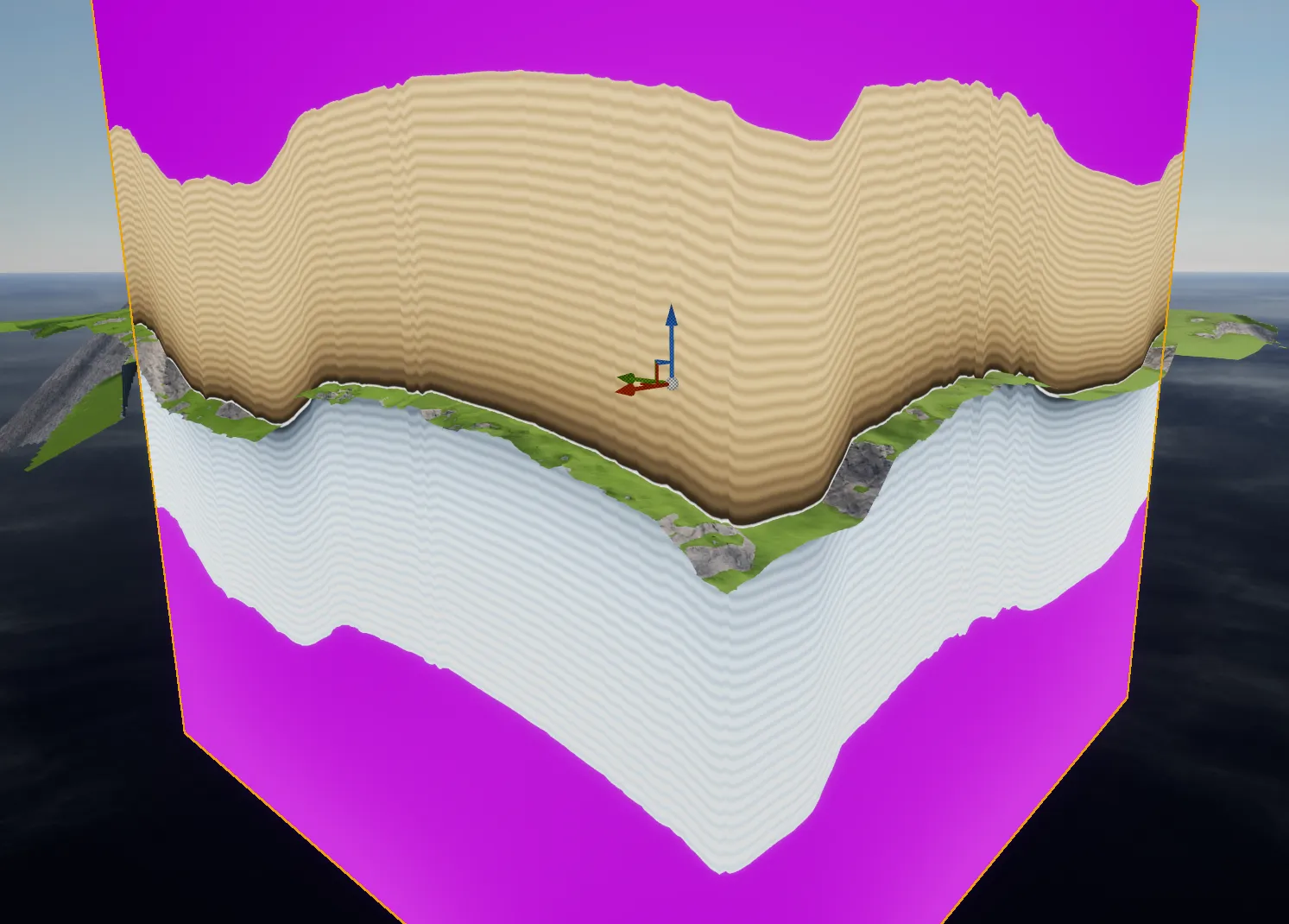Appearance
WARNING
This page is work-in-progress, but does already contain its core information.
this matters because of performance; generation gets more costly with each stamp affecting a given position, so we want bounds to be as small as possible. that way we can skip as many stamps as possible
for height stamps: height range + bounds extension determines vertical bounds. all height ranges for a given XY position are 'merged' together to decide where heights need to be evaluated. if heights need to be evaluated for an XY position, all chunks within the merged height bounds will evaluate all height stamps.
bounds extension is largely for smoothness compensation, but should (almost) always be >0 - the DF should always have some padding around the surface.
all also applies to splines - be mindful of overlapping segments (bounds) within a single spline, can cause issues
Voids
Stamps write distances up to a certain distance from their surface. Beyond that, the distance field will return NaN, rather than an actual distance - we call that a Void.
TIP
The screenshots in this section make use of the Voxel Debug Actor - this lets you easily preview the Distance Field from your Stack/Voxel World from the editor viewport.

For volume stamps, if the distance value for any position exceeds the bounds (including scale and bounds extension, using the smallest component) that value is replaced with a Void.

The size of the valid distance band around height stamps can be configured in the Stack used by the Voxel World.